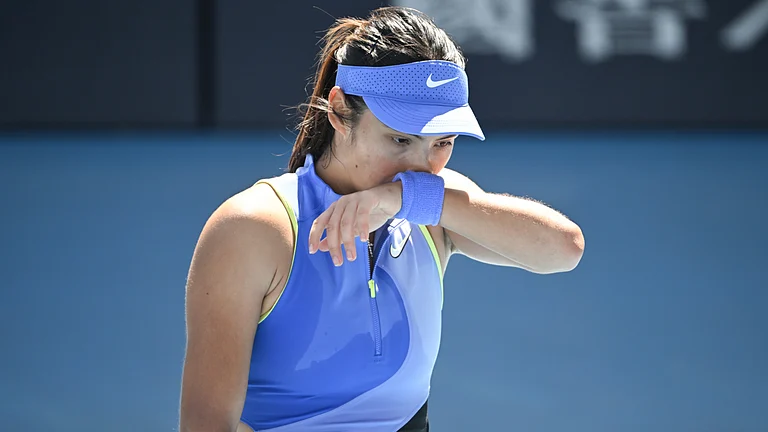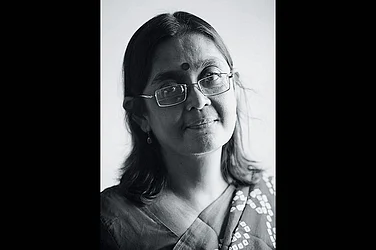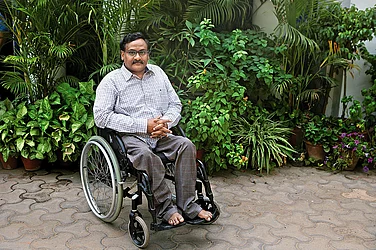PAOTUNG, an ex-soldier in the Assam regiment, cannot forget that fateful Monday morning. Lying in his hospital bed at Dimapur, he counts himself lucky to be alive. For, 30 of his co-passengers, all Kukis, were killed after gunmen, suspected to be militants of the Issac Muivah faction of the National Socialist Council of Naga-land (NSCN), stopped a bus in Nagalands Peren sub-division on December 9 and opened indiscriminate fire.
Paotung, one of the two survivors who can speak Hindi, says the bus, a collective property of the Kuki community from Athibung village, situated several miles off Jalukie, was on its way to Dimapur, full of Christmas shoppers. "It was around 8 am when we were on a lonely stretch that these gunmen, dressed in fatigues and armed with automatic weapons, stopped the bus. They asked all Nagas, women and children to get off. Two persons got down, but the women and children refused to do so. Without wasting much time, the gunmen lined up the passengers about five feet from the bus and sprayed them with bullets."
The ethnic killing, which sent shock waves throughout Nagaland and Manipur, is not unique. Elsewhere in the North-east too, pitched battles between tribals and plainsmen, sometimes even between two tribes are routine. On December 13, the tribal All-Tripura Tiger Force gunned down 24 Bengalis in a town 70 km off Agartala. As for the Nagas and Kukis, they have been at loggerheads ever since they first started fightingmainly over landin 1992.
The Kuki-Naga or precisely the Kuki-Tan-gkhul clash has its origins in the hills of neighbouring Manipur. The battle is for land as much as it is for the lucrative clandestine trade on the India-Myanmar border. Says Lt Gen. S.S. Grewal, general officer commanding of the Armys 3 Corps which oversees counter-insurgency operations in Nagaland and Manipur: "The latest incident is merely a culmination of several factors such as the Issac-Muivah groups desire to control the Moreh market and also have a free corridor from the Assam-Nagaland border right upto the Myanmar boundary."
Grewal says the NSCN has been attempting to dominate the Kukis in the Manipur hills but has not succeeded in making any real impact. "As a result of the frustration among the cadres, the feud may have spilled over to Nagaland," he feels. Some, including the other Naga tribes, see the latest massacre as an attempt by the Tangkhuls to create a fresh misunderstanding between Kukis and non-Tangkhul Naga tribes.
To understand the complex issue, one needs to look at the population composition of the Peren sub-division in Nagaland, strategically located on the tri-junction of Assam, Nagaland and Manipur. Dominated by the Zeliangrong Nagas, the subdivision has a substantial number of Kukis settled here for over a century. Both tribes co-existed peacefully till 1994 when at least three Kuki villages were burnt down. The resultant tension escalated alarmingly till peace talks were brokered by saner elements in June 1994. Another meeting to confirm the agreement between the two communities was held in March this year and then as recently as November 27.
In fact, it was the November 27 meeting which emboldened the Kukis to start the bus service between Athibung and Dimapur. L. Vaiphei, secretary of the Kuki Impi, Nagaland, an apex organisation representing the tribe, told Outlook: "The relations between us and Zeliangrongs are cordial. The recent meetings had reassured our people about their safety. But this incident has once again created tension in the region." Nagalands Minister of State for Relief and Rehabilitation, T.R. Zeliang, described the killings as a "master plan" to sabotage the peace between Kukis and Zeliangrongs in Peren.
Although no one says it in so many words, the blame is being pinned on the Tangkhuls, a Naga tribe which hails from the Ukhrul district of Manipur, for the latest trouble. Says Shindi Zeliang, a businessman from Jalukie: "The outsiders create trouble in our areas." He has an explanation for the incident. "The land to people ratio in our area is very high. So some of our fellow tribes want to grab land here. This can be done by forcing people to leave the area and what better way to create an exodus than to kill people on such a large scale," he says without identifying the tribe or the militant group that could be behind the incident.
Gen. Grewal partly agrees with this hypothesis: "There is definitely a land angle behind the killing. The NSCN militants (Issac-Muivah group) have long wanted to create a safe corridor to travel freely between Nagaland and Manipur. Since Peren is strategically located, they want to settle some of their own people in this belt. Hence this attempt to create a fear psychosis among the Kukis to force them to leave the area."
There are other factors at work too. The biggest is the virtual war between the Tangkhuls who dominate the Issac Muivah faction of the NSCN and the Kukis in Manipurs Tamenglong and Churachandpur districts. For the last four years, the two tribes have been killing each other. The fight is for the town of Moreh on the India-Myanmar border which also acts as the entry point for several smuggled items ranging from weapons to narcotics. Despite its best efforts, the NSCN has been unable to take control of the town which has a mix of Kukis, and surprisingly, Tamilians, settled there for nearly a century. The result: sporadic killings of villagers from both communities. The Kukis also have their militant groups, the Kuki National Army and the Kuki National Front, which take on the NSCN from time to time.
According to military and police sources, the immediate provocation could be the refusal of the Kukis to take part in the centenary celebrations of Manipuri conversions to Christianity. Both Tangkhuls and Kukis practise Christianity but the Kuki leaders refused to attend the recent celebrations organised by the Manipur Baptist Convention. The Kuki Impi boycotted the celebrations during which Church leaders appealed to both the communities to live "harmoniously". The Kuki Impi leaders termed the peace appeal and meetings as "farcical", saying that after every such meeting in the past, a prominent Kuki leader was killed. This, security forces say, may have angered the Tangkhuls, especially the NSCN.
The other reason put forward by the army is its recent successes in arresting a string of top-rung NSCN leaders. "Virtually all the big leaders, except the top three or four, have been arrested. It has become difficult for the organisation to operate in its strongholds. The pressure put by us is so much that the militants had to make their presence felt somewhere," Gen. Grewal said. He may have a point there. Since May, at least seven top NSCN leaders have been picked up by security forces. They include: the NSCNs self-styled home minister Rukhmao Raising; two deputy home ministers; the outfits finance minister Qucheve Chisi Swu, younger brother of the NSCN supremo Issac Chisi Swu; self-styled brigadier and deputy chief of the NSCNs armed wing, Hanshi; and Raisings successor, Angelus Shirmey.
"The outfit is under tremendous pressure after these arrests. Its so-called response to Prime Minister H.D. Deve Gowdas offer to hold unconditional talks with the Centre also stems from this ground reality," an intelligence officer explained. Even Gen. Grewal is not sure whether the outfit is willing to come forward for talks. "In the past, these groups have used the ploy of talks to buy time and regroup," the 3 Corps commander said.
The Issac-Muivah faction, regarded as the most potent insurgent group in the Northeast, is also facing increasing attacks from the other NSCN outfit, led by a Burmese Naga, S.S. Khaplang. In recent months, several killings in Dimapur and Kohima have been attributed to factional fights. Whatever the reason, the ethnic violence in Nagaland and Manipur has continued unabated and the Jalukie incident is just another statistic. The only difference is the all-round condemnation of the massacre.
Nagaland Chief Minister S.C. Jamir feels the killings are aimed at sabotaging the "peace process". Authorities in Manipur are worried over a possible backlash in the state. Security measures have been stepped up in both Kuki and Naga areas but the fight between the NSCN rebels and the Kukis is unlikely to end here as it involves a battle for land and trade.






















